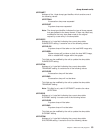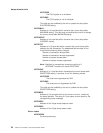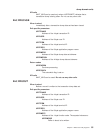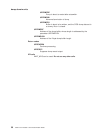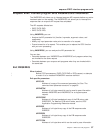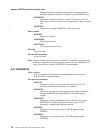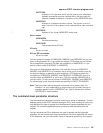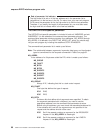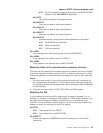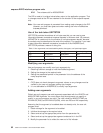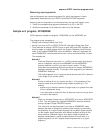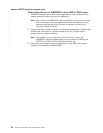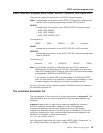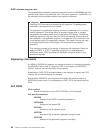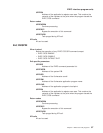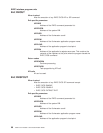X'20' Set if the request contains an argument for the MAXLIFETIME
keyword. If set, NQ_ADDR3 is meaningful.
NQ_BITS2
Two bytes not used by the enqueue domain.
NQ_EIDOPT5
One byte not used by the enqueue domain.
NQ_EIDOPT6
One byte not used by the enqueue domain.
NQ_EIDOPT7
One byte not used by the enqueue domain.
NQ_EIDOPT8
Indicates whether certain keywords were specified on the request.
X'04' NOSUSPEND was specified.
X'02' DEQ was specified.
X'01' ENQ was specified.
NQ_ADDR1
is the address of an area containing the value from RESOURCE.
NQ_ADDR2
is the address of the halfword value of LENGTH.
NQ_ADDR3
is the address of the fullword value of MAXLIFETIME.
Modifying fields in the command-level parameter structure
The fields that are passed to the enqueue domain are used as input to the request.
The correct method of modifying an input field is to create a new copy of it, and to
change the address in the command-level parameter list to point to your new data.
Notes:
1. You must never modify an input field by altering the data that is pointed to by
the command-level parameter list. To do so would corrupt storage belonging to
the application program and would cause a failure when the program attempted
to reuse the field.
2. There are no output fields on EXEC CICS ENQ and DEQ requests.
Modifying the EID
It is not possible to modify the EID to make major changes to requests. It is not
possible, for example, to change an ENQ request to a DEQ request. However, you
can make minor changes to requests, such as to turn on the existence bit for
LENGTH. The list that follows shows the bits in the EID that can be modified. Any
attempt to modify any other part of the EID is ignored.
NQ_BITS1
X'40' The existence bit for LENGTH
X'20' The existence bit for MAXLIFETIME.
NQ_EIDOPT7
A user exit program at XNQEREQ can set the following on or off for ENQ
commands:
enqueue EXEC interface program exits
Chapter 1. Global user exit programs 61



